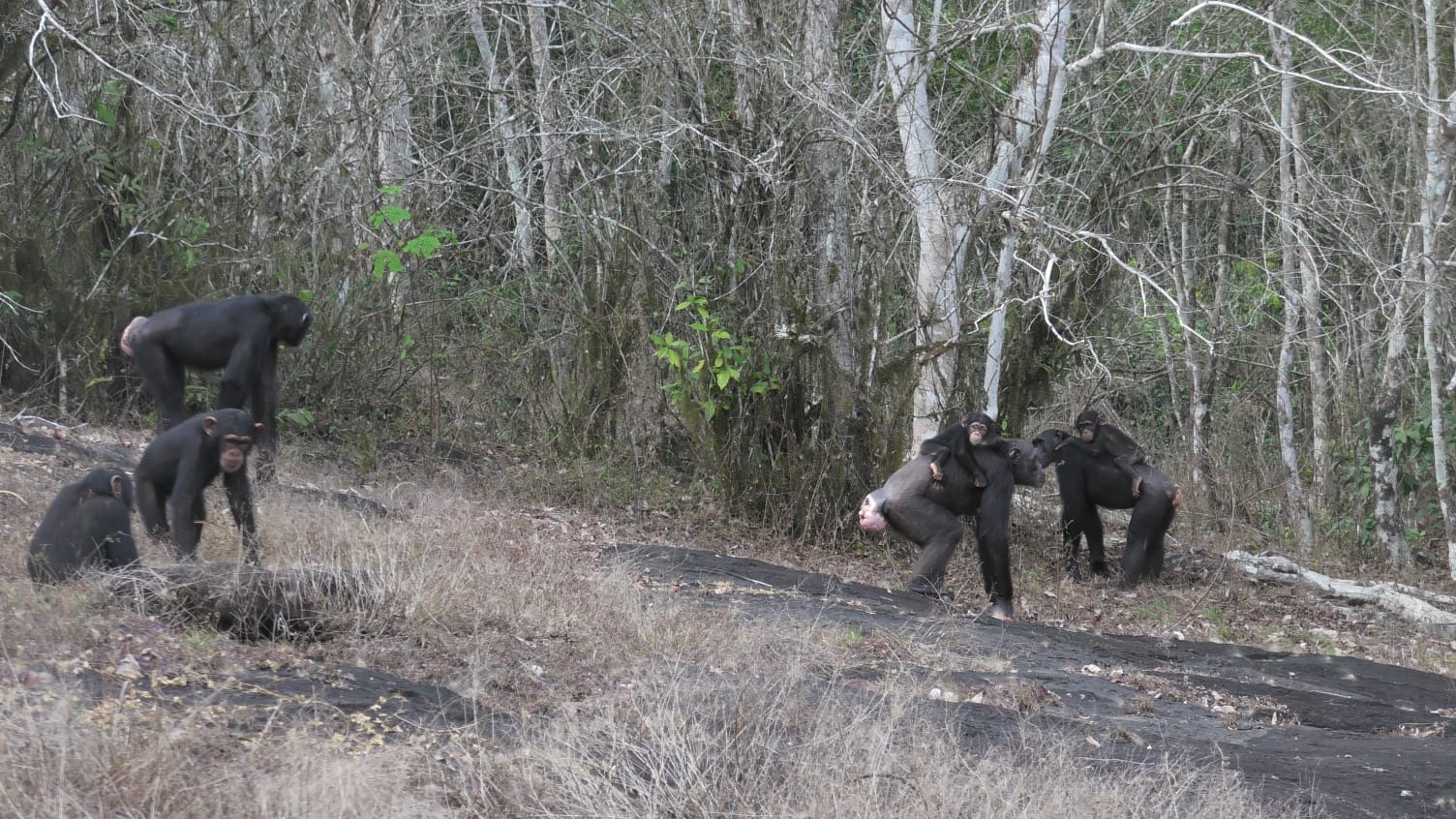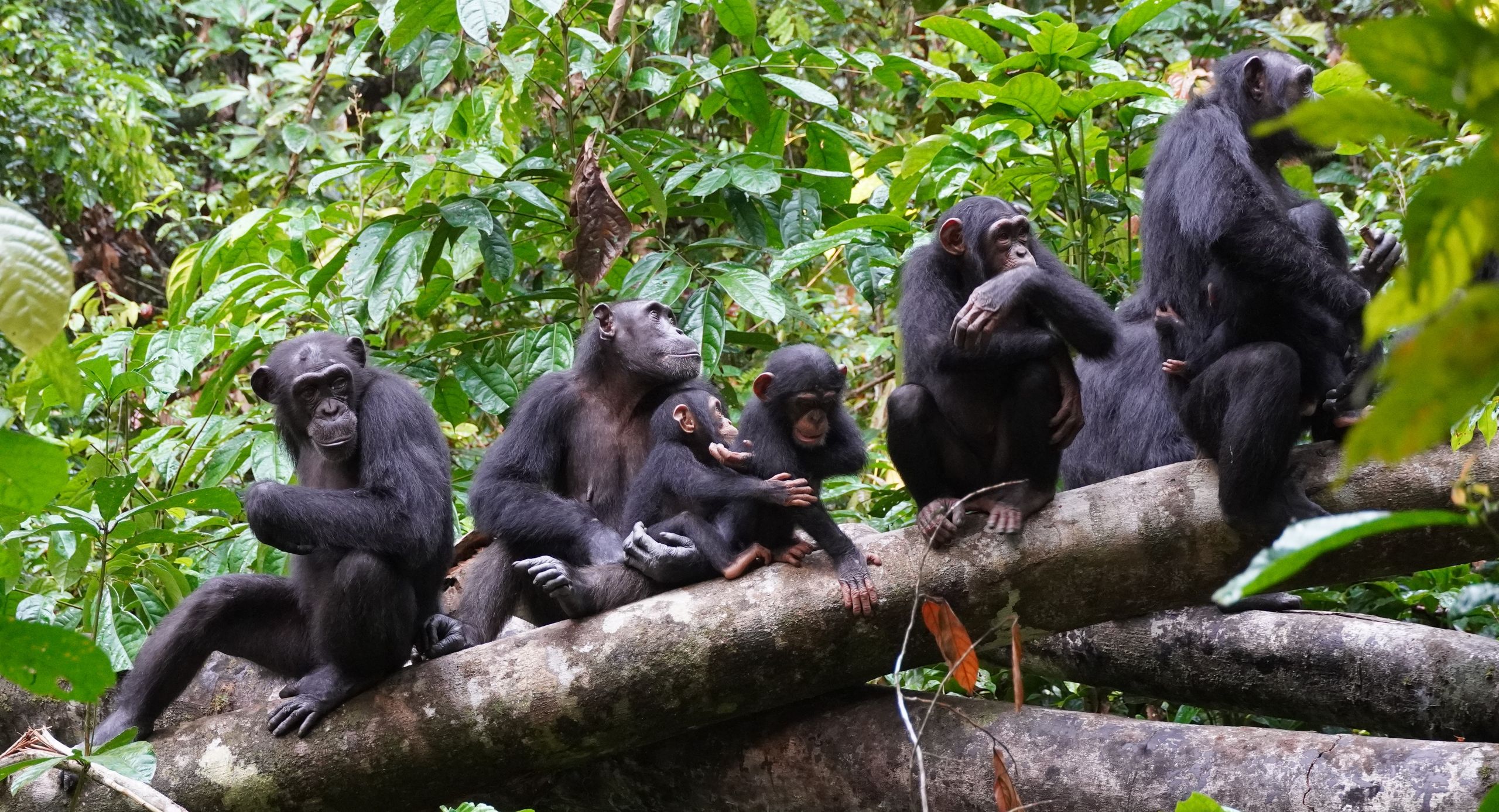Two weeks on from Jane Goodall’s death, many have been reflecting on her life, including her scientific legacy and how she changed humanity’s connection to the natural world.
As a pioneering primatologist, Goodall was the first to spy many behaviors and characteristics in the chimpanzees (Pan troglodytes) of Tanzania’s Gombe National Park that had been assumed to be unique to humans, including tool use, warfare and personalities.
Goodall’s observations revolutionized our understanding of chimps; and her unconventional approach, stemming from a lack of formal scientific training, enabled her to make several contributions that changed the face of animal research. Yet this would prove to be a double-edged sword, leading her to use methods that primatologists no longer consider helpful today.
So what were Goodall’s contributions to primatology? And did any fall short? Live Science spoke to chimpanzee experts to unpack her enduring impact on chimp research, including how some of her initial observations biased our understanding of how chimps think and behave, and the ways scientists have learned from the unintended consequences of her early decisions.
One of the most notable examples of Goodall’s unwitting defiance of strict scientific conventions can be found in her giving individual names to the Gombe chimpanzees and remaining open-minded to their capabilities.
“She didn’t know that she wasn’t supposed to give them names. She didn’t know that you weren’t supposed to talk about feelings and emotions and personal histories,” Elizabeth Lonsdorf, a professor of anthropology at Emory University who studies the Gombe chimps, told Live Science. “Her real gift to us was firmly planting that as a basic understanding of chimpanzees so that we can design better science with that in mind.”
Recognizing the need to consider the personal histories of chimps was pivotal, and by establishing the first long-term study of chimps, Goodall ignited an entire research field. The Gombe chimps are now followed daily by a dedicated team of expert Tanzanian trackers, and, since 1960, scientists have collected over 165,000 hours of data on their behavior.
Researchers can now track chimpanzees’ development from birth to old age using these data, watching how each generation transfers skills and knowledge onto the next. “Chimps live 60 years so you can’t actually ask those questions without five, six decades of research,” Lonsdorf said.
The Gombe community now contains the fifth generation of chimpanzees descended from the original chimps Goodall studied, with family lineages grouped according to the first letter of their mothers’ names.
‘Friendship’ as the ‘F’-word in primatology
Naming chimps goes beyond tracking, and has opened the door to new research avenues. Laura Simone Lewis, a primatologist at the University of California, Santa Barbara, told Live Science that while captive chimps clearly respond to their own names, she is currently investigating whether they also recognize those given to their groupmates.
Finding evidence that chimps keep track of each other’s names would suggest that the underlying capacity to understand social labels could have emerged before the evolution of human language, Lewis said. “That comes directly from Jane’s work of naming chimpanzees.”
This research also carries on Goodall’s work of investigating social bonds in chimps. Lewis noted that many of Goodall’s early observations about the social and emotional lives of chimps were anecdotal, and so were discounted.
In fact, “friendship” was considered the “f” word in primatology for over 40 years after Goodall’s first observations. Lewis is still careful when using the term, yet its growing acceptance among primatologists is based on years of empirical research, and points to the validity of Goodall’s first insights. “We often call them close social relationships, but what they really are are friendships. And they are long-lasting, very closely bonded relationships between animals that can last for decades.”
This sentiment is echoed elsewhere. Liran Samuni, a primatologist at Harvard University who studies cooperation and intergroup relationships in chimps, said that despite chimps’ bad reputation for aggression, she “cannot think of a primate species [aside from humans] that is also as cooperative and as dedicated to each other as chimpanzees are.”
The distinction is that chimps are very friendly to their ingroup and “systematically hostile to the outgroup,” Sylvain Lemoine, a primatologist at the University of Cambridge, told Live Science.
Chimpanzees’ “social landscape is made of their own community and of the neighboring communities,” Lemoine said. And at any time, they run the risk of being ambushed by hostile neighbors, he added.
Goodall’s observations on chimp aggression were also foundational. She was the first to observe lethal aggression between chimpanzee groups, and documented what has become known as the Gombe Chimpanzee War, which was a four-year-long conflict caused by the splintering of the Kasakela community.
At first, Lemoine said, researchers dismissed this as an artificial behavior that resulted from Goodall feeding the chimps bananas — called “provisioning.” By plying the chimps with food, Goodall could entice the whole group to one central spot to observe their interactions more easily. However, this high concentration of sought after resources dangerously heightened the competition between the chimps.
It is now known that intergroup violence is common across chimp populations, and “whether this community in Gombe split because of the provisioning is another question,” Lemoine said.
This exemplifies an important point, however. While Goodall’s open-mindedness meant she ignored unproven presumptions made by experts during her time, such as warfare being unique to humans, she also made decisions that ultimately had unexpected negative repercussions.
Not all chimps are Gombe chimps
The fact that Goodall’s early work was centred on one community at one site, Gombe National Park, also created another unintended consequence: The long-lasting assumption that the behavior and social structure of the Gombe chimps was the same across all chimp communities. “This is something that people who study chimpanzees are still grappling with,” Samuni said.
We now know that chimps across Africa can vary considerably from one another. For example, the intensity of intergroup competition among chimps varies depending on the animals’ social structures, Samuni told Live Science, with a 2014 large-scale study published in the journal Nature finding that East African chimps were more lethal than those in West Africa. They also found that groups with more adult males witnessed a greater number of killings.

Also, Goodall observed that female chimps were antisocial, generally sticking to themselves while males gathered to interact. This is true on its face: Females in East African chimp communities, like those in Gombe, do tend to be more peripheral members of the group, Samuni explained.
But this is far from true everywhere. Females in West African chimp communities are “extremely central to the social network,” Samuni said. Nonetheless, the first impression made by Goodall’s observations left a long-lasting presumption that all female chimps were antisocial, a bias that took years to overturn.
However, Lonsdorf said that she never viewed Goodall’s work as putting blinders on researchers. Goodall’s observations simply lay the groundwork for studying variation by developing a “baseline framework of how a chimpanzee behaves,” she said.
Times have changed
A lot has changed since Goodall’s initial observations. These days, the Gombe chimps are given Swahili names rather than English ones, and naming individuals in the local language is common across sites. In addition, chimpanzees are no longer provisioned at any site.
Also, researchers can now collect data beyond observations. “Nowadays, our science is largely interdisciplinary or multidisciplinary,” Alejandra Pascual-Garrido, a primatologist at the University of Oxford who works with the Gombe chimps, told Live Science. There is now a genetics lab in Gombe, making it possible for researchers to study paternity and the health of the gene pool.
The days of closely interacting with chimpanzees as Goodall did are likewise long gone. Researchers now wear masks to avoid getting animals sick and keep their distance to stay safe, and primatologists work to ensure photographs of people very close to primates aren’t shared as they can undermine conservation efforts and encourage the pet trade. Pascual-Garrido noted that the old images of Goodall hugging chimpanzees would be considered “completely unacceptable” by primatologists nowadays.
It’s important to remember that Goodall was doing what seemed to work at the time, and had no other site to learn from. Samuni said “the fact that she did not come with those predefined ideas and concepts actually allowed her to see things that other people may have missed or may have thought, ‘okay, it cannot exist.'” Pascual-Garrido agreed. “She saw the world differently and she made the world see the world differently,” she said.
